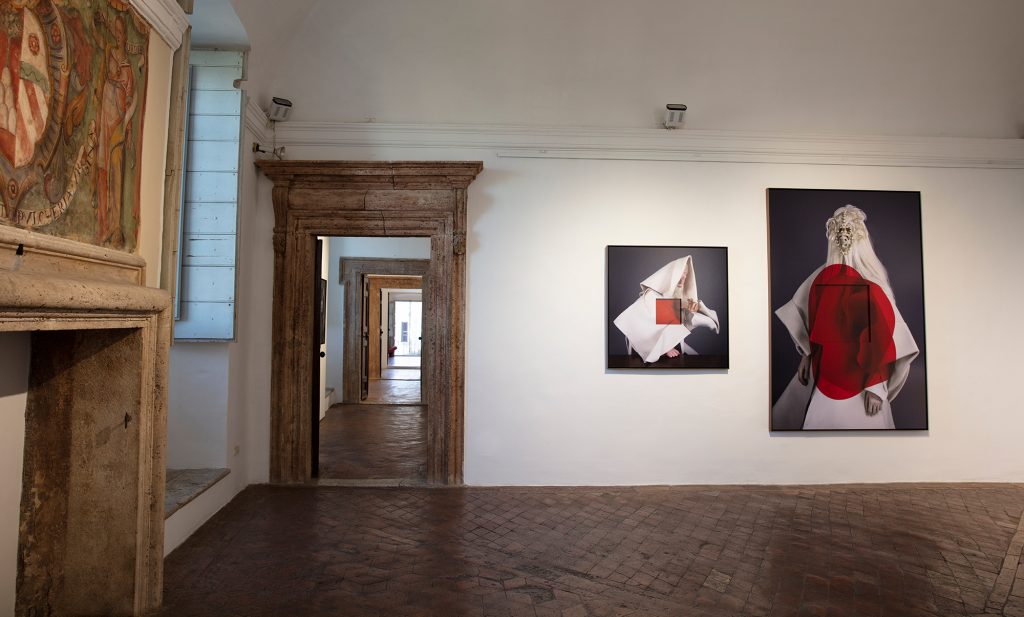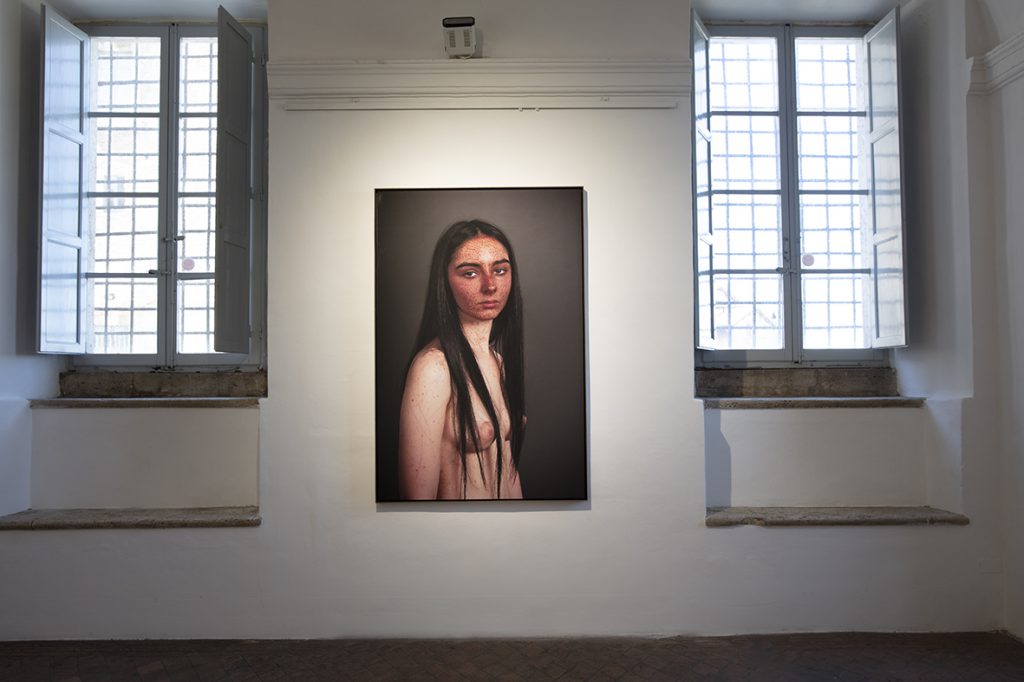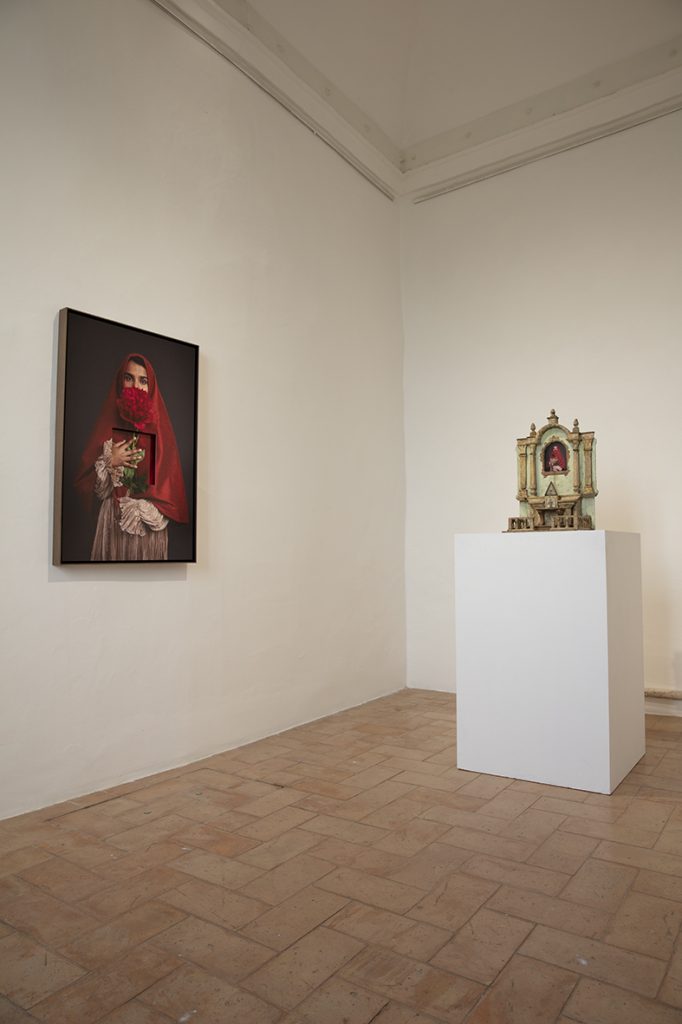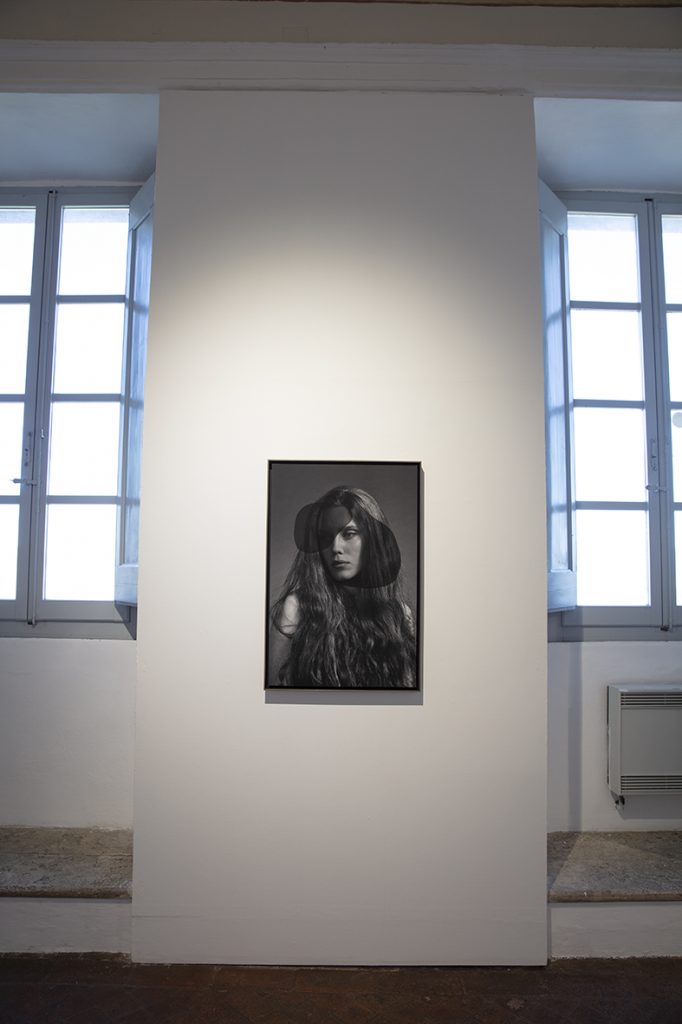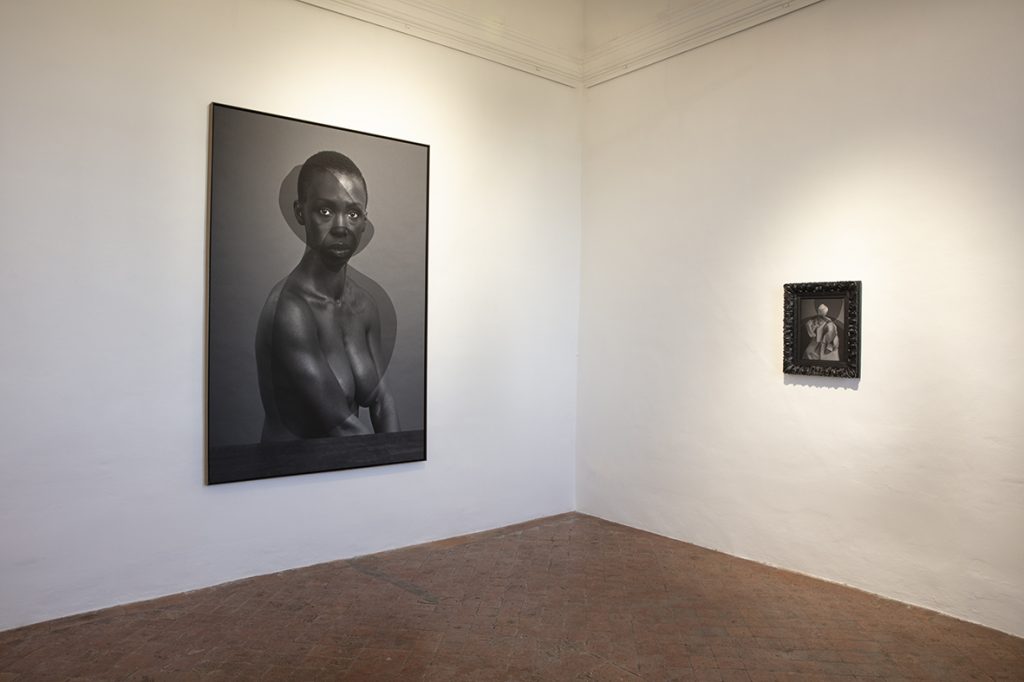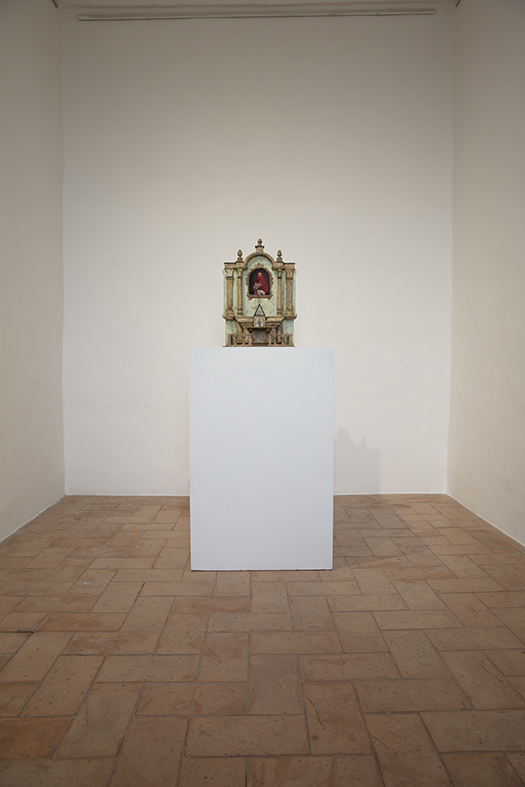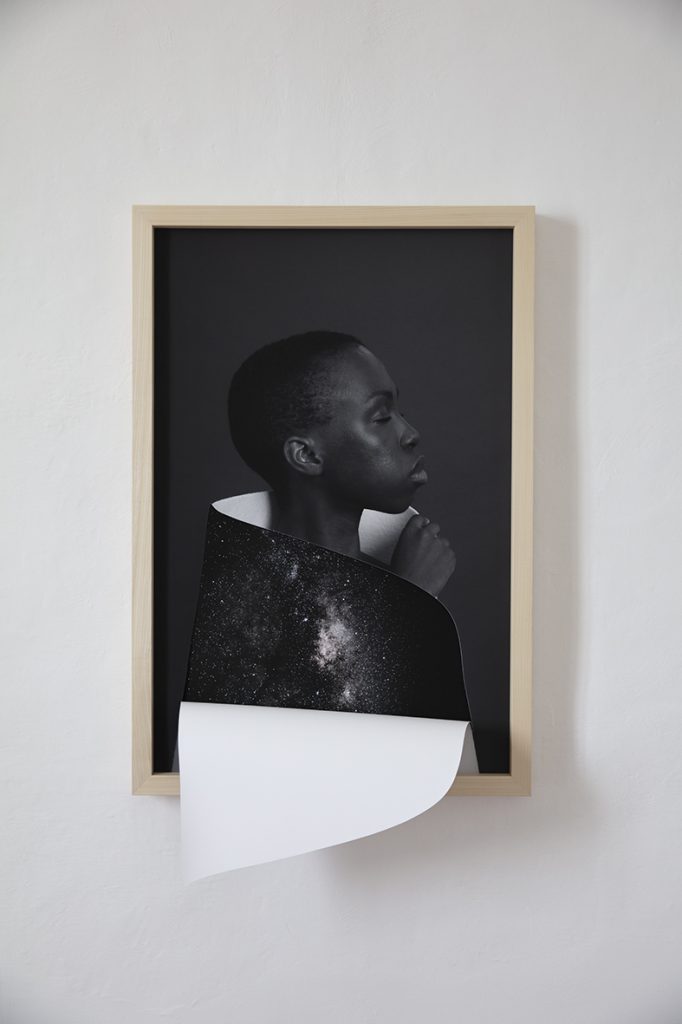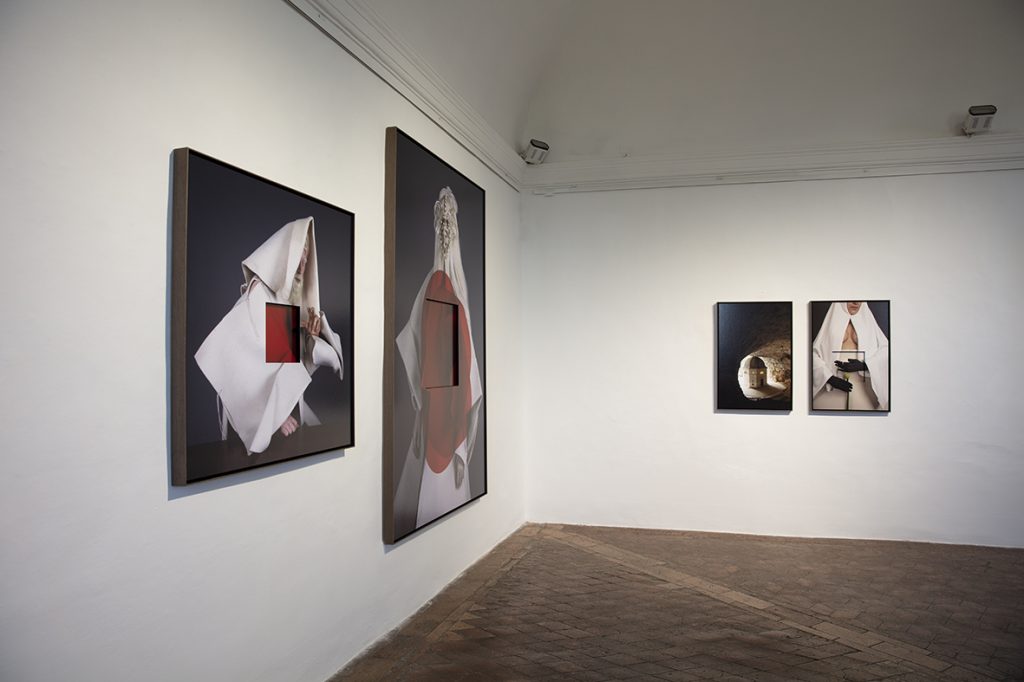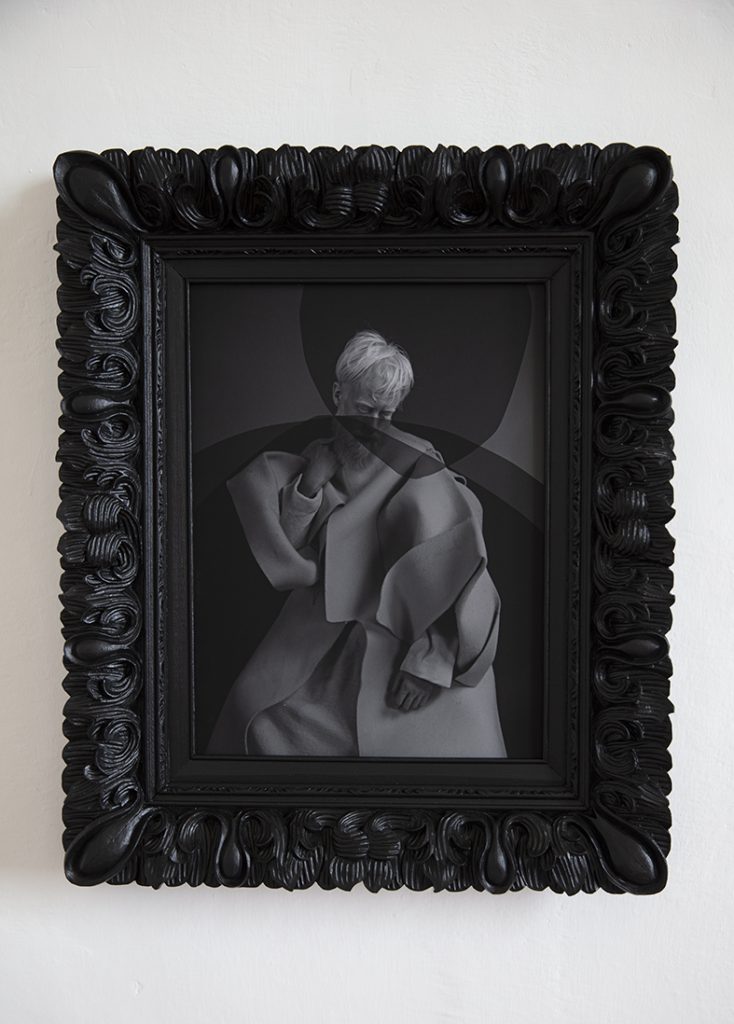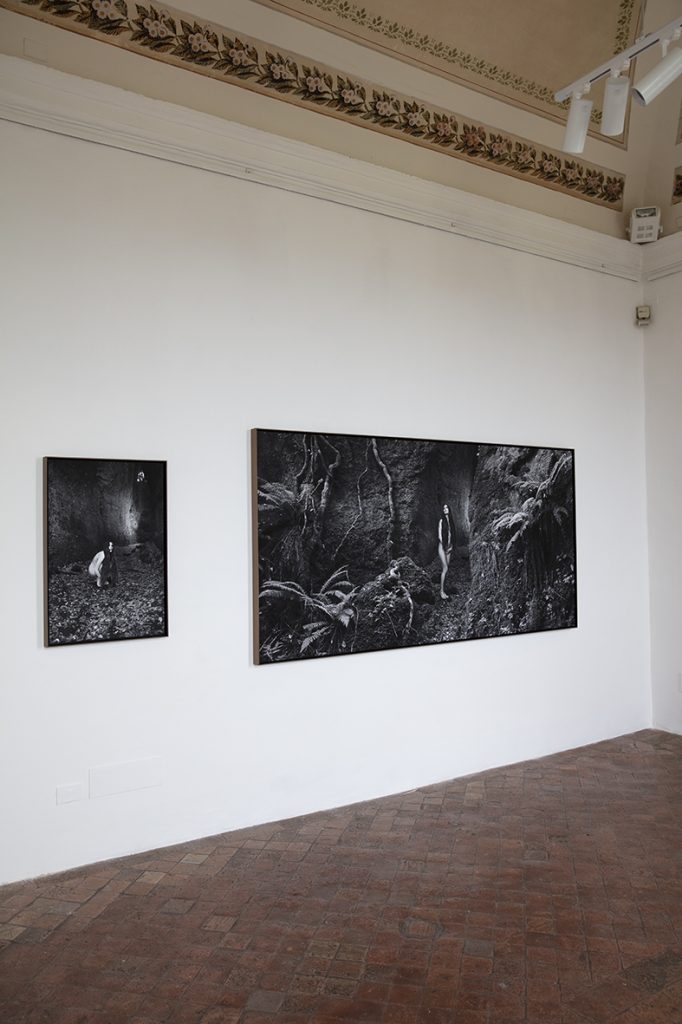Matteo Basilé
“MNEMOSYNE”
Galleria Giampaolo Abbondio – Piazza Giuseppe Garibaldi, 7 – Todi (PG)
19 June – 19 September, 2021
Opening: 19 June, h: 12:00 – 20:00

Dopo vent’anni di attività Giampaolo Abbondio trasferisce da Milano al cuore dell’Umbria la sede espositiva, all’interno di Palazzo Atti-Pensi, il più importante esempio di architettura privata del XVI secolo della città di Todi. Ad inaugurare questa nuova sede, sarà la mostra dell’artista romano Matteo Basilé, nata durante questo periodo di pandemia, dal titolo Mnemosyne.
Mnemosyne (Μνημοσύνη) giacendo con Zeus genera le Muse, ed è a questa figura mitologica che il grande studioso Aby Warburg si è ispirato per creare il suo Mnemosyne Atlas, in cui ha provato a catalogare le creazioni artistiche umane mostrando come queste forme possano continuamente rigenerarsi nel tempo.
Mnemosyne per Basilé è dunque un luogo dedicato assieme alla memoria e alla creazione: un archivio di ispirazioni per il futuro e costituisce per lui il punto di partenza per un viaggio antropologico, culturale e territoriale alla ricerca di linguaggi e forme espressive in grado di interpretare e di rappresentare le metamorfosi contemporanee dell’Io, dell’altro e dell’altrove.
L’artista romano scruta coincidenze e discordanze scandagliando la grazia e la complessità di identità atipiche ed inaspettate. Confrontandosi con un’estetica che ha da poco superato un lungo periodo di ipericonicità e di omologazione (scaturiti dall’avvento del mercato e della comunità globalizzata) la sua opera passa a setaccio la complessità dei rapporti tra uomo, natura e memoria nel contesto traumatizzante della pandemia di Covid 19 che ha travolto i popoli dei cinque continenti. Un diario fotografico che racconta storie e segreti di individui extra-ordinari, pellegrini/e senza tempo spesso con il volto coperto da maschere misteriose, inquietanti e magnetiche ma anche magiche e liberatorie e che entrano in contatto con l’anima di luoghi mistici e antichi in cui architettura e paesaggio si uniscono in un’armonia dell’inesprimibile, dell’invisibile e del sublime.
La poetica dell’artista viene qui scandita attraverso un percorso per immagini che si evolvono all’interno di una dimensione onirica che spesso ci ricorda l’espressione surrealista nello svelare aspetti della realtà altrimenti nascosti e repressi. Sullo sfondo di ambientazioni, che custodiscono segreti e storie dimenticate, Basilé mette in scena una bellezza fragile e cangiante che esplora e analizza l’interesse verso la dimensione culturale del sesso della società contemporanea. L’artista romano si interessa all’evoluzione ricorrente e alle mutazioni di idee e forme. Le sue fotografie catturano performance improvvisate e magnetiche che sconvolgono la percezione del mondo e di noi stessi. Quest’opera è una riflessione sulla nascita di una nuova estetica ma anche un modo per comprendere come l’arte depura, altera, enfatizza o forgia la nostra percezione della realtà. Una scoperta sulla continuità e l’armonia delle cose in una sorta di ininterrotta attività mitopoietica dove subconscio, fantasia e realtà trovano una nuova dimensione, un universo parallelo in cui creature divine e umane si incontrano e l’affannarsi dei corpi e della psiche si convertono in giochi di forme.
Una meditazione sulle verità spesso inquietanti della condizione umana da cui vengono estrapolati i ricordi di passate civiltà, intramezzati a scorci di vita contemporanea e in cui confluiscono le speranze e i sogni dei soggetti rappresentati. Studiando la natura mutante dell’immagine e sperimentando la complessità morfologica della Musa, Basilé intuisce desideri furtivi eppure persistenti che traduce con leggerezza, profondità e calore vibrante. Un viaggio a bivi dove lo spettatore sceglierà il proprio percorso, dove il locale diventa universale e intimità e alterità coesistono in perfetto equilibrio.
Matteo Basilé (1974) vive e lavora a Roma. Inizia la sua carriera a metà degli anni ’90 ed è tra i primi artisti in Europa a fondere arte e tecnologia. La ricerca di Basilé riesce a conciliare in maniera inconfondibile idee apparentemente inconciliabili come bello e grottesco, come reale e surreale, naturale e artificiale. Esplorando la natura dell’essere umano, l’artista sviluppa una narrativa suddivisa in capitoli successivi: Quel che resta della Transavanguardia (2006) The Saints are Coming (2007), Thisoriented (2009), Thishumanity (2010), Landing (2012), Unseen (2014), Pietra Santa (2016), Viaggio al Centro della Terra (2017) Stardust (2018), Memento (2019), Mnemosyne (2021)
Oltre agli argomenti trattati, la riconoscibilità di Basilé è data dall’uso unico della fotografia e del video attraverso le luci e le composizioni che portano lo spettatore ad un viaggio iconografico tra passato e futuro.
Dal 1994 al 2021 ha realizzato sessanta mostre personali e partecipato a più di centocinquanta mostre collettive. Ha rappresentato l’Italia alla Biennale di Venezia nel 2009 nel Padiglione Italia.
Le sue opere sono state esposte tra glia altri al Hongkun Museum of Fine Art, Beijing – Minsheng Art Museum, Beijing – United Art Museum, Wuhan – Creative Art Center, Beijing – U. P. Exhibition Center, Shanghai – MACRO, Roma – Museo di Palazzo Bellomo, Siracusa – DATA, Orto dell’Abbondanza, Urbino – Museo D’Arte Moderna Vittoria Colonna, Pescara – Palazzo Collicola, Spoleto – Istituto Italiano di Cultura di Madrid – Hubey Provincial Academy of Art Museum – National Gallery of Modern Art, Calcutta, India – Villa Bottini, Lucca – MART, Rovereto – XIII Biennale dell’Havana, Matanzas – Palazzo Reale, Napoli – Palazzo delle Papesse, Siena – GNAM, Roma – MAN Museo d’Arte Contemporanea, Nuoro – GAM Galleria Arte Moderna di Bologna.
After twenty years of activity Giampaolo Abbondio moves his exhibition venue from Milan to the heart of Umbria, in Palazzo Atti-Pensi, the most important example of XVI century private architecture in the city of Todi. This new venue will be inaugurated by an exhibition of the Roman artist Matteo Basilé entitled “Mnemosyne”, conceived during this pandemic period.
Mnemosyne (Μνημοσύνη) lying with Zeus generates the Muses, and it is from this mythological figure that the great scholar Aby Warburg drew inspiration to create his Mnemosyne Atlas, in which he tried to catalogue human artistic creations, showing how these forms can continually regenerate themselves over time.
Mnemosyne for Basilé is therefore a place dedicated to memory and creation: an archive of inspirations for the future, and constitutes for him the starting point for an anthropological, cultural and territorial journey in search of languages and forms of expression capable of interpreting and representing the contemporary metamorphoses of the Self, the Other and the Elsewhere.
The Roman artist scrutinizes coincidences and discordances, sounding out the grace and complexity of atypical and unexpected identities. Dealing with an aesthetic that has recently overcome a long period of hyper-iconicity and homologation (triggered by the advent of the market and the globalized community), his work sifts through the complexity of the relations between man, nature and memory in the traumatizing context of the Covid-19 pandemic that swept through the populations of the five continents. A photographic diary that tells the stories and secrets of extra-ordinary individuals, timeless pilgrims often with their faces covered by mysterious, disturbing and magnetic, but also magical and liberating masks, who come into contact with the soul of mystical and ancient places where architecture and landscape come together in a harmony of the inexpressible, the invisible and the sublime.
The artist’s poetics is here articulated through a pathway of images that evolve within a dreamlike dimension that often reminds us of the surrealist expression in revealing aspects of reality that would otherwise be hidden and repressed. Against the backdrop of settings that hold secrets and forgotten stories, Basilé stages a fragile and shimmering beauty that explores and analyzes contemporary society’s interest in the cultural dimension of sex. The Roman artist is interested in the recurrent evolution and mutation of ideas and forms. His photographs capture improvised and magnetic performances that upset our perception of the world and ourselves. This work is a reflection on the birth of a new aesthetic but also a way of understanding how art purifies, alters, emphasizes or forges our perception of reality. It’s a discovery of the continuity and harmony of things in a sort of uninterrupted mythopoetic activity where the subconscious, fantasy and reality find a new dimension, a parallel universe in which divine and human creatures meet, and the labours of the body and psyche are converted into games of forms.
A meditation on the often-disturbing truths of the human condition, from which the memories of past civilizations are extrapolated, interspersed with glimpses of contemporary life in which the hopes and dreams of the represented subjects converge. Studying the changing nature of the image and experiencing the morphological complexity of the Muse, Basilé intuits furtive yet persistent desires that he translates with lightness, depth and vibrant warmth. A journey of crossroads where the viewer chooses his own path, where the local becomes universal and intimacy and otherness coexist in perfect balance.
Matteo Basilé (1974) lives and works in Rome. He began his career in the mid-1990s and was one of the first artists in Europe to merge art and technology. Basilé’s research succeeds in unmistakably reconciling apparently irreconcilable ideas such as the beautiful and the grotesque, the real and the surreal, the natural and the artificial. Exploring the nature of the human being, the artist develops a narrative divided into successive chapters: Quel che resta della Transavanguardia (2006), The Saints are Coming (2007), Thisoriented (2009), Thishumanity (2010), Landing (2012), Unseen (2014), Pietra Santa (2016), Viaggio al Centro della Terra (2017), Stardust (2018), Memento (2019), Mnemosyne (2021). In addition to the topics covered, Basilé’s recognisability lies in his unique use of photography and video through lighting and compositions that take the viewer on an iconographic journey between past and future.
From 1994 to 2021 he held sixty solo exhibitions and participated in more than one hundred and fifty group exhibitions. He represented Italy at the Venice Biennale in 2009 in the Italian Pavilion.
His works have been exhibited, among others, at the Hongkun Museum of Fine Art, Beijing – Minsheng Art Museum, Beijing – United Art Museum, Wuhan – Creative Art Center, Beijing – U. P. Exhibition Center, Shanghai – MACRO, Rome – Museo di Palazzo Bellomo, Syracuse – DATA, Orto dell’Abbondanza, Urbino. dell’Abbondanza, Urbino – Museo D’Arte Moderna Vittoria Colonna, Pescara – Palazzo Collicola, Spoleto – Italian Institute of Culture, Madrid – Hubey Provincial Academy of Art Museum – National Gallery of Modern Art, Calcutta, India – Villa Bottini, Lucca – MART, Rovereto – 13th Havana Biennial, Matanzas – Royal Palace, Naples – Palazzo delle Papesse, Siena – GNAM, Rome – MAN Museo d’Arte Contemporanea, Nuoro – GAM Galleria Arte Moderna di Bologna.
Ph. Antonio Maniscalco

